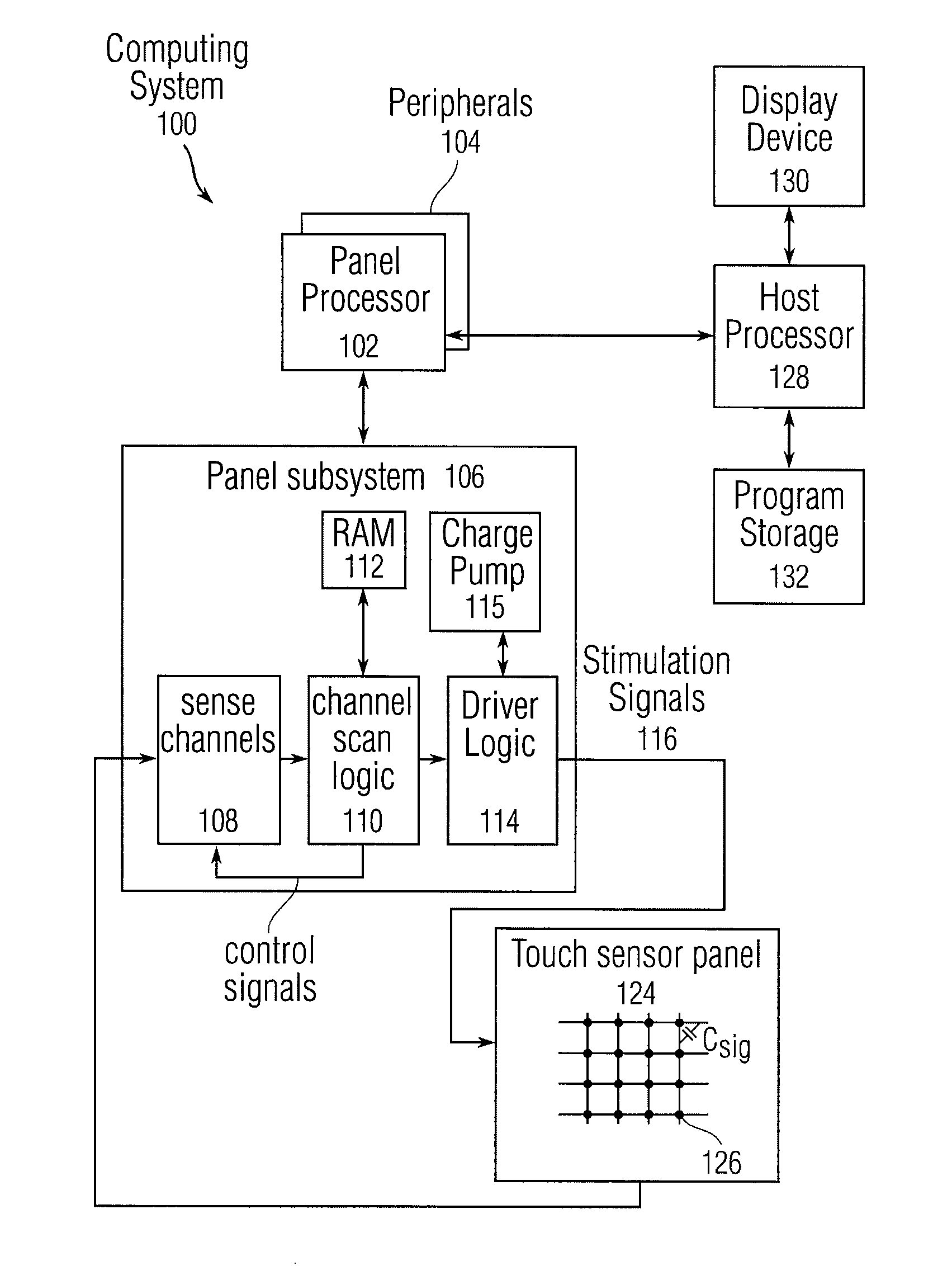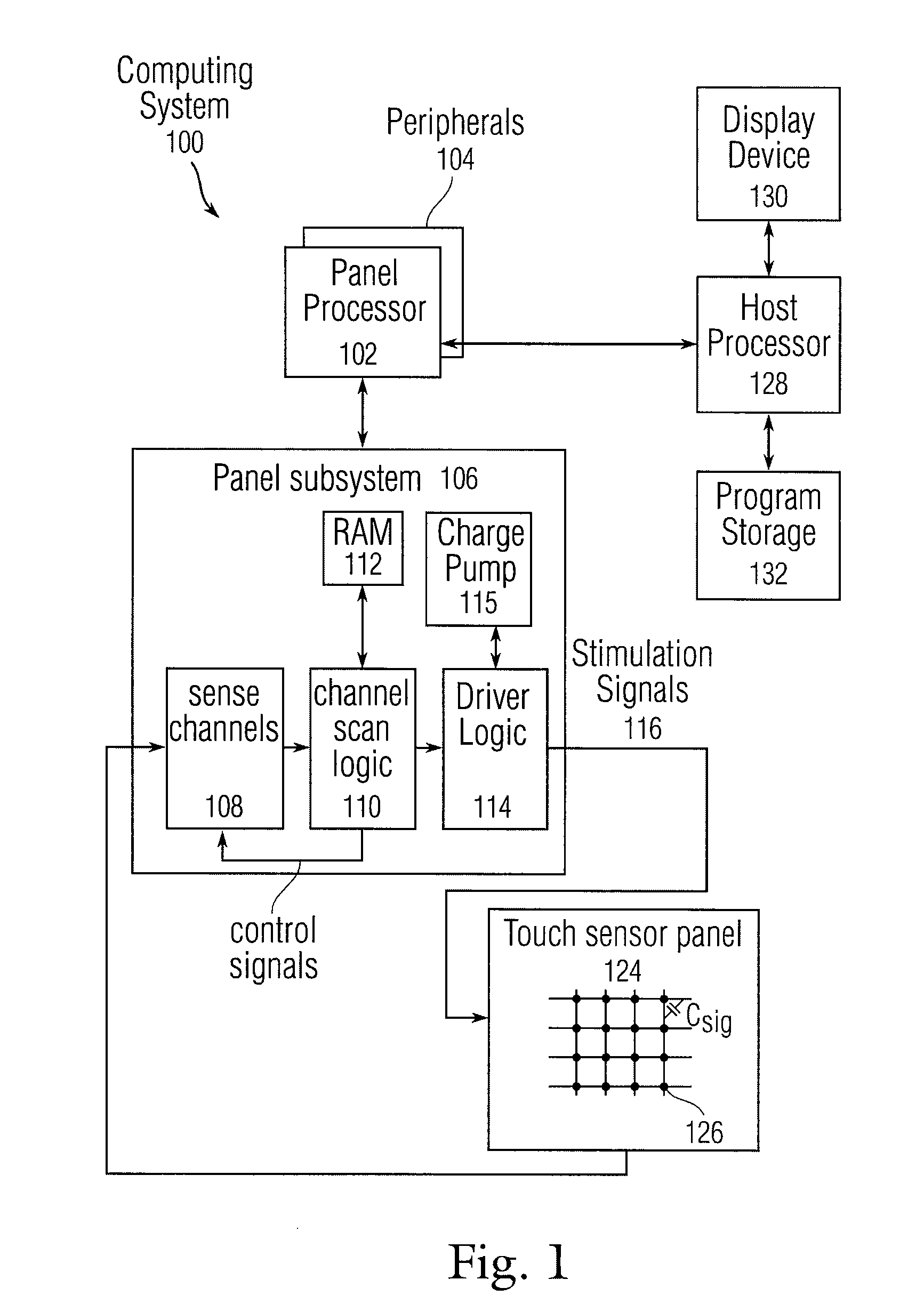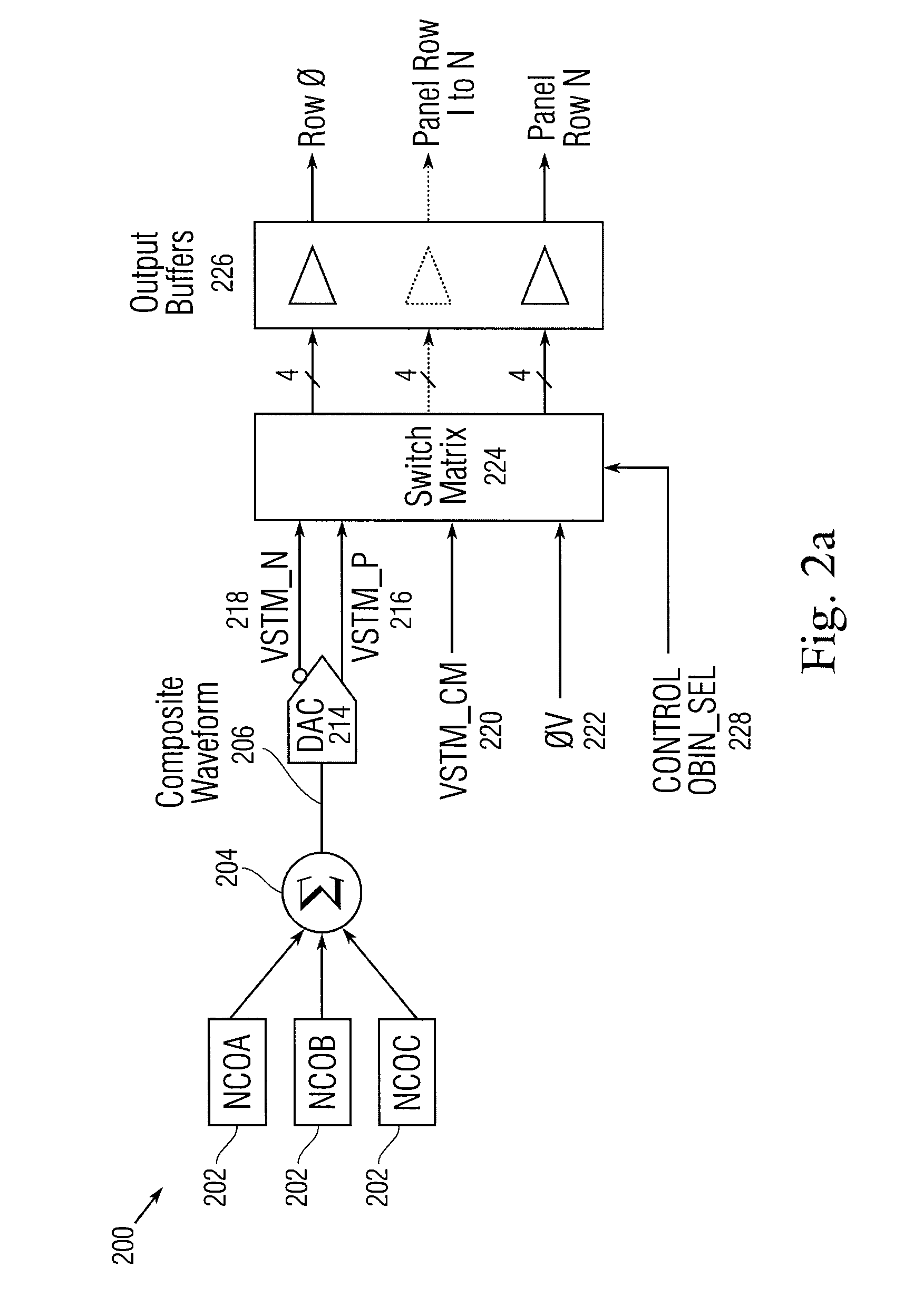Auto Scanning for Multiple Frequency Stimulation Multi-Touch Sensor Panels
a multi-frequency stimulation and auto-scan technology, applied in the field of low-power auto-scan mode, can solve problems such as causing instability
- Summary
- Abstract
- Description
- Claims
- Application Information
AI Technical Summary
Benefits of technology
Problems solved by technology
Method used
Image
Examples
Embodiment Construction
[0026]In the following description of preferred embodiments, reference is made to the accompanying drawings which form a part hereof, and in which it is shown by way of illustration specific embodiments in which the invention can be practiced. It is to be understood that other embodiments can be used and structural changes can be made without departing from the scope of the embodiments of this invention.
[0027]This relates to the use of multiple stimulation frequencies and phases to detect touch events on a touch sensor panel in a low-power or sleep state of expected touch inactivity, so that when a touch event is detected, the touch sensor panel can be activated or awakened into its full-power capability to thereafter detect and localize touch events.
[0028]Although some embodiments of this invention may be described herein in terms of mutual capacitance touch sensors, it should be understood that embodiments of this invention are not so limited, but are generally applicable to other...
PUM
 Login to View More
Login to View More Abstract
Description
Claims
Application Information
 Login to View More
Login to View More - R&D
- Intellectual Property
- Life Sciences
- Materials
- Tech Scout
- Unparalleled Data Quality
- Higher Quality Content
- 60% Fewer Hallucinations
Browse by: Latest US Patents, China's latest patents, Technical Efficacy Thesaurus, Application Domain, Technology Topic, Popular Technical Reports.
© 2025 PatSnap. All rights reserved.Legal|Privacy policy|Modern Slavery Act Transparency Statement|Sitemap|About US| Contact US: help@patsnap.com



